Pentax Optio S12 Review
Pentax Optio S12
Pentax updates the Optio S series with a 12MP sensor
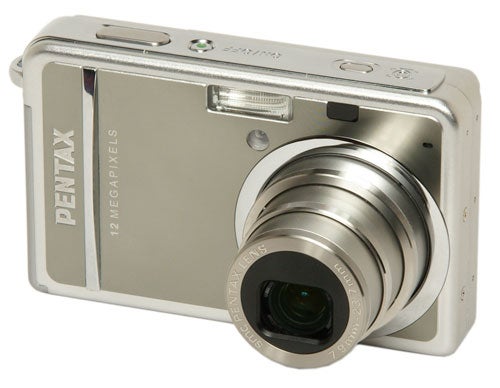
Verdict
Key Specifications
- Review Price: £149.99
In November last year I took a look at the 10-megapixel Pentax Optio S10, at the time the newest incarnation of the original ultra-compact digital camera, the Pentax Optio S. I was impressed by its simple classic design, solid build quality, brisk performance and excellent value for money. Naturally however technology marches onward, so today I’m taking a look at the S10’s successor, the new 12-megapixel Optio S12.
There’s a time-honoured saying, the polite version of which is “if it ain’t broke, don’t fix it”, and that’s exactly what Pentax has done with the design of the S12. Apart from a few detail changes to the appearance of the front panel, and of course the new 1/1.7-inch 12-megapixel CCD sensor, it is virtually identical to the S10. It has exactly the same durable all-aluminium body with the same pocket-sized 87 x 54 x 21mm dimensions and the same ultra-light 130g shooting weight. It has the same f/2.8 – f /5.4 3x zoom folding lens, and the same 2.5-inch 232k LCD monitor. Even the price is the same. You can buy an S12 in the high street for £149.99, which was the street price of the S10 when I reviewed it, although the older model is now a bargain-priced £99.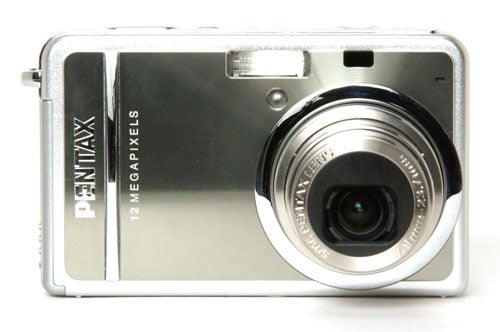
There are quite a few 12-megapixel compact cameras on the market at the moment. Recent examples include the Nikon CoolPix S700 (£171), the Fujifilm FinePix F100fd (£177), the Panasonic Lumix FX100 (£202), the Canon IXUS 960 IS (£236) and even Pentax’s own Optio A40 (£200). Looking at those prices the S12 looks like a total bargain, but all of those models feature some form of mechanical image stabilisation technology. The S12 lacks this feature, so a more valid comparison would be with the Kodak EasyShare V1233 (£126) or the Casio Exilim EX-Z1200 (£155).
Image stabilisation is certainly a useful feature, but on a 3x zoom camera it’s not vital, and the S12 makes up for its lack in other ways. As I’ve mentioned, the design of the body is virtually unchanged from earlier models in the series. Although the S12 is a very small and slim camera it is surprisingly easy to handle and the combination of the subtly textured surface and the raised detail on the front make it easy to grip securely. The simple control layout leaves plenty of room on the back for your thumb, with a small row of raised dots providing a little extra purchase. The controls themselves are small but well spaced and easy to operate, with a nice firm positive action. The zoom control is quick and responsive, but the six steps between minimum and maximum zoom make it difficult to frame shots accurately.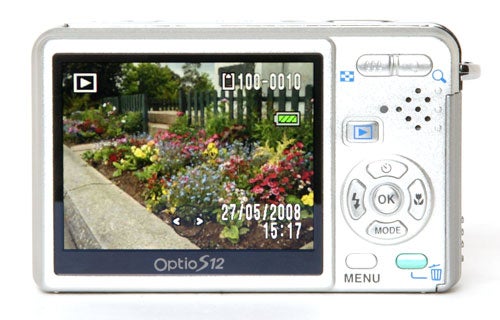
The S12 is a relatively straightforward point-and-shoot compact, but it still has quite a bit of versatility to offer. Like most of Pentax’s compact camera range it has two main shooting modes, an Auto Picture mode in which the camera automatically selects the best scene program for the particular circumstances and many of the menu options are disabled, and a Program mode, in which scene programs can be manually selected, along with a small but useful selection of other options, including wide area, centre spot or subject-tracking autofocus, multi-segment, centre-weighted or spot exposure metering, and adjustable contrast, saturation and sharpness. There are several drive options as well, including multi-exposure and the facility to use an optional remote control.
The only new feature on the S12 is a dynamic range adjustment option, a feature which is appearing on a lot of recent high-resolution compacts, in an effort to counteract the inherent DR limitations of small, crowded sensors. IN this case it has four settings; off, weak, strong and automatic. Like most such systems it works by darkening highlights and brightening shadows, and as in many other cases this can result in increased image noise in darker areas of the image. However left in automatic mode it copes reasonably well, and picture quality doesn’t suffer noticeably in most cases.
The main menu is nice and simple, with just six screens divided into two sections, one for recording options and the other for basic setup. One feature I particularly like is the customisable green function button. A useful array of options can be assigned to the function menu, speeding up camera operation for frequently-used options.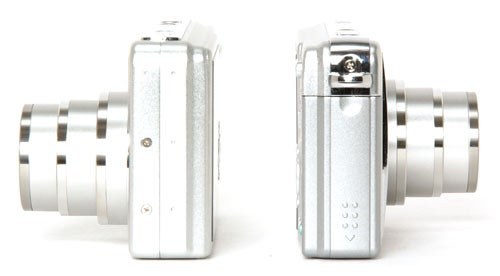
As well as the main menu there is the Mode menu. In shooting mode this accesses the scene programs, as well as the video and sound recording modes. There are 11 main scene programs, but several of these has sub-options, for instance the text mode has monochrome or colour modes, as well as negative modes and adjustable contrast. One amusing option is the pets mode, which has options for light, medium or dark coloured pets, as well as separate setting for cats and dogs. These are of course exactly the same, just with different icons. Of course the much-loved frame composite mode is still an option, and the three superimposed frames are just as hilariously awful as ever.
There are several options in playback mode too, including colour filters, a selection of digital effects, red-eye correction and adjustable brightness, as well as the usual options of cropping, rotation and resizing.
The Optio A10 saw a big improvement in performance over previous models in the series, and the S12 shares the same qualities. Startup time is a respectable two and a half seconds, and it shuts down again even more quickly. The autofocus system is nice and quick in normal conditions, giving the S12 a sustained shot-to-shot cycle time of a very fast 1.2 seconds in single shot mode, checking focus for each shot, while in continuous shooting mode it can sustain approximately 0.8 seconds per shot, although the speed is not constant. It doesn’t focus between shots in continuous mode though, so this limits its usefulness for moving subjects.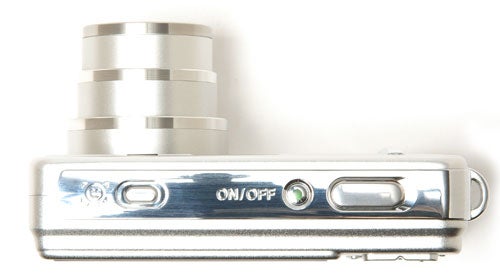
As with the S10, low light focusing is a little slow, but it is accurate and reliable, with a good AF assist lamp giving it the ability to focus in the dark at a range of a couple of metres.
Image quality too is very similar to the S10. The level of fine detail is very impressive, as good as any of the more expensive 12MP compacts. I found that it did tend to under-expose slightly, but this had the effect of preserving highlight detail, especially in the case of very bright saturated colours, something which has been a problem on some high-res compacts. Lens quality is also good for an ultra-compact, although there was some barrel distortion at wide angle, as well as some corner blurring and a little chromatic aberration at the edges of the frame. As expected, image noise at higher ISO settings is more or less the same as the S10, with noise visible at 200 ISO and significant loss of detail at 400. As usual the highest settings are best avoided.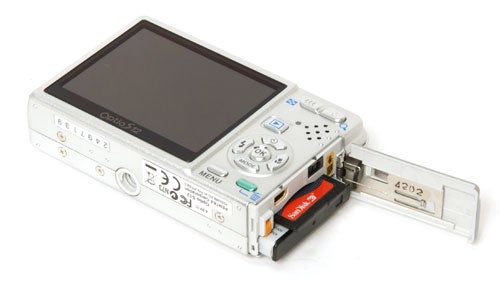
”Verdict”
Like its predecessors the Optio S12 is a very well made and easy to use camera, with a nice simple design that continues to look good even five years after its initial launch. Although it lacks image stabilisation, it makes up for it with numerous other fun and useful features. Performance is very good and it works well in low light, making it a good choice for a night out, as well as an excellent general snapshot camera. At £150 it is very good value for money, which will only get better as the price falls.
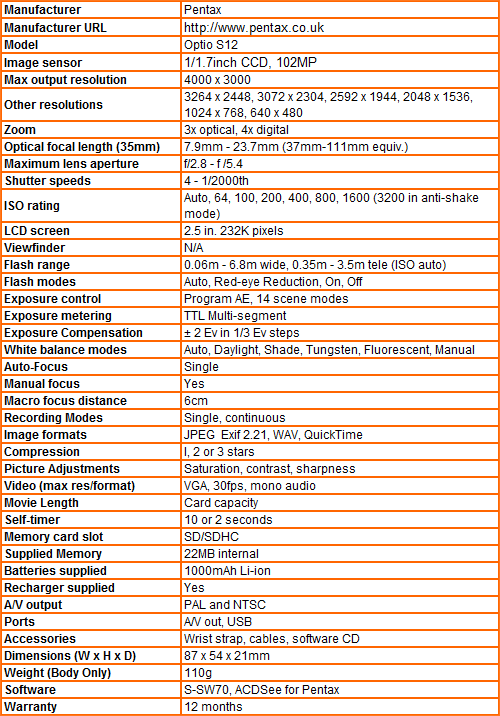
”Over the next few pages we show a range of test shots. On this page the full size image at the minimum and maximum ISO settings have been reduced to let you see the full image, and a series of full resolution crops have taken from original images at a range of ISO settings to show the overall image quality.”
—-
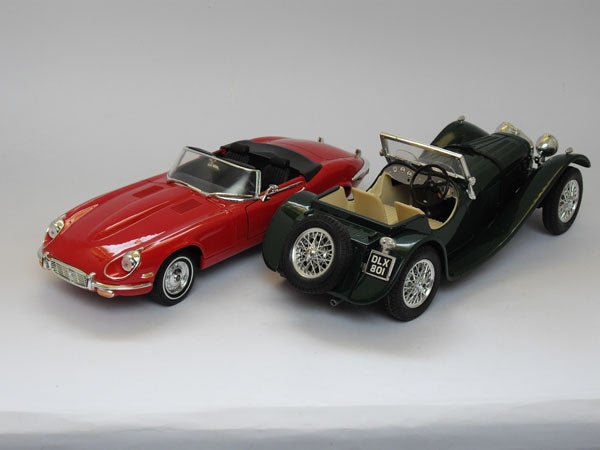
This is a full-frame image at the minimum sensitivity of 64 ISO.
—-
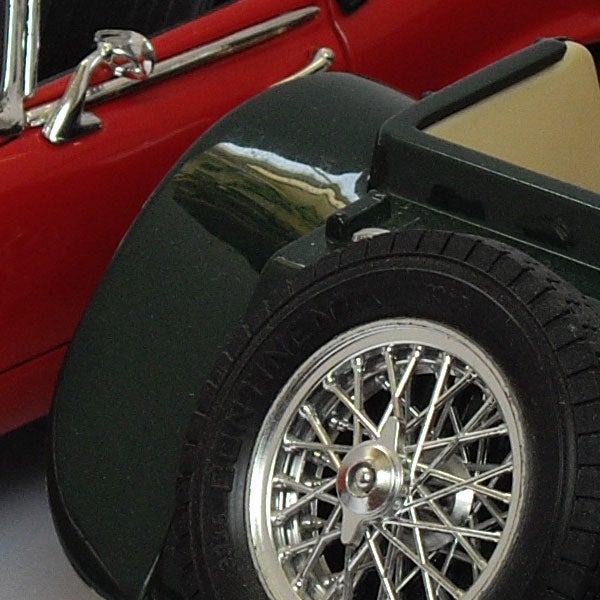
At 64 ISO the image quality is very good, with no noise problems, although the green saturation could be higher.
—-
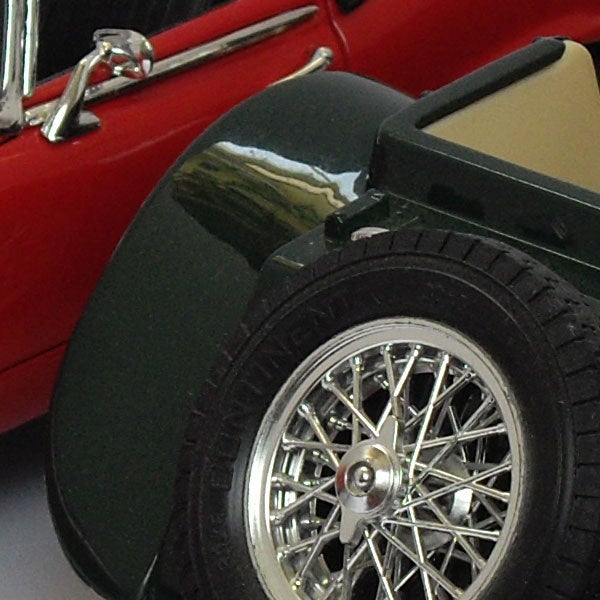
Still no major issues at 100 ISO.
—-
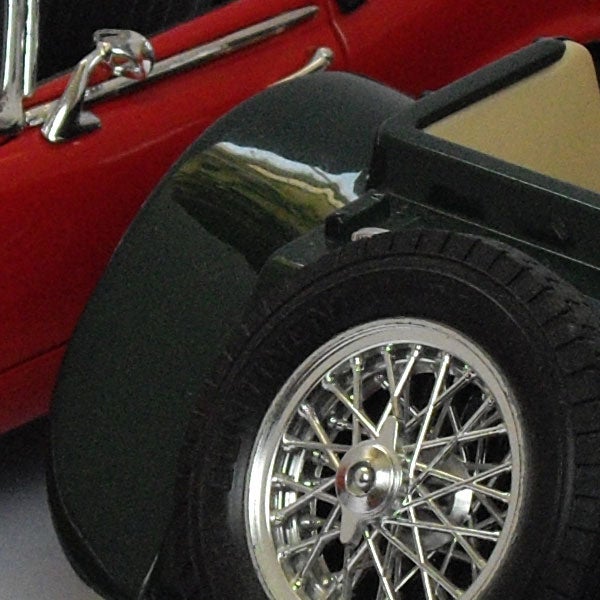
Noise is visible at 200 ISO, but the image is still perfectly usable.
—-
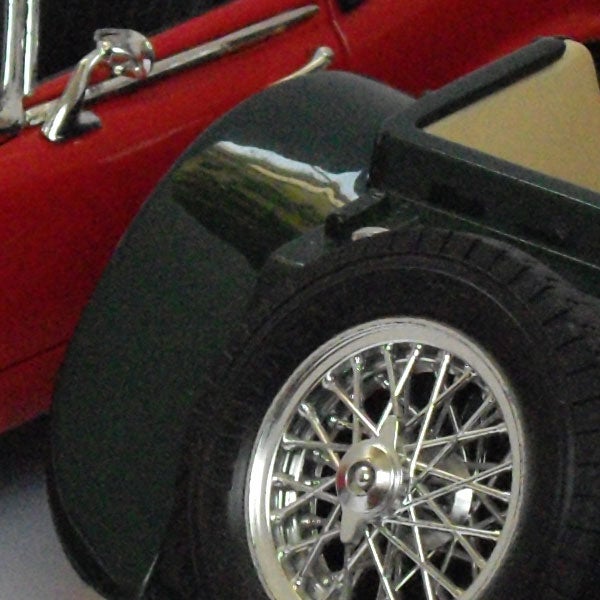
There is a noticeable drop in image quality at 400 ISO as the noise reduction system goes to work.
—-
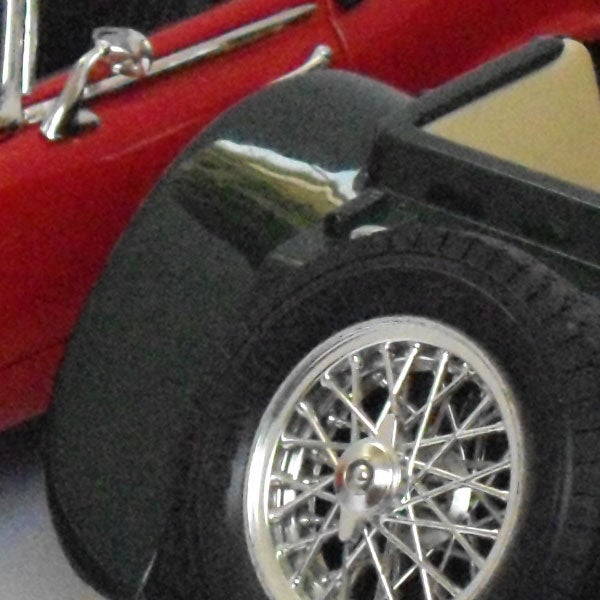
All fine detail is lost at 800 ISO, and the image looks blurred.
—-
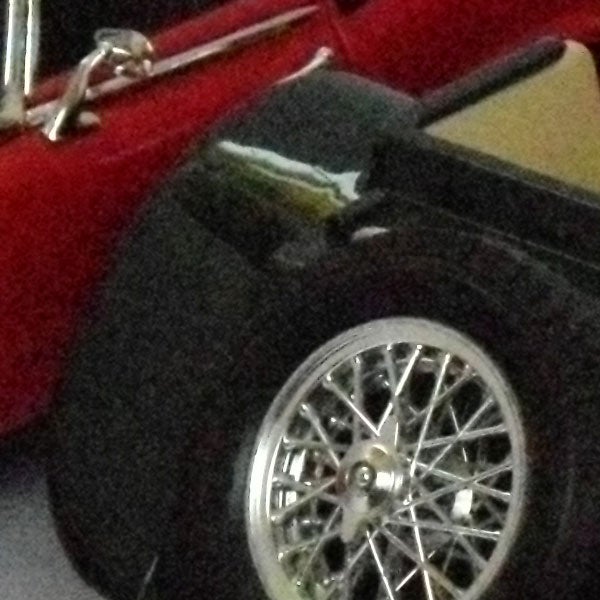
Image quality is very poor at 1600 ISO, and this setting is best avoided.
—-
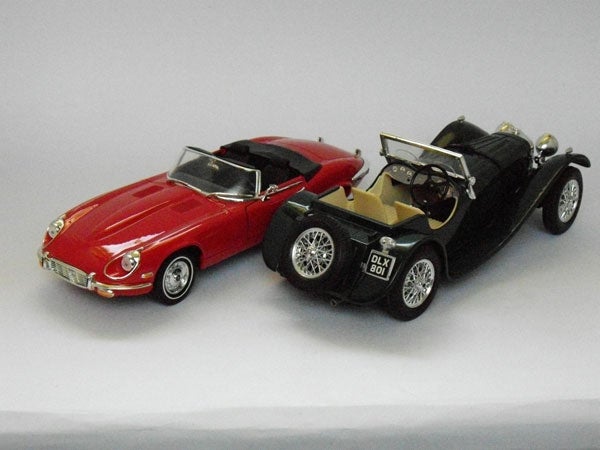
This is the full frame at 1600 ISO.
—-
”A range of general test shots are shown over the next two pages. In some cases, the full size image has been reduced for bandwidth purposes, and a crop taken from the original full resolution image has been placed below it to show the overall image quality. Some other pictures may be clicked to view the original full-size image.”
—-
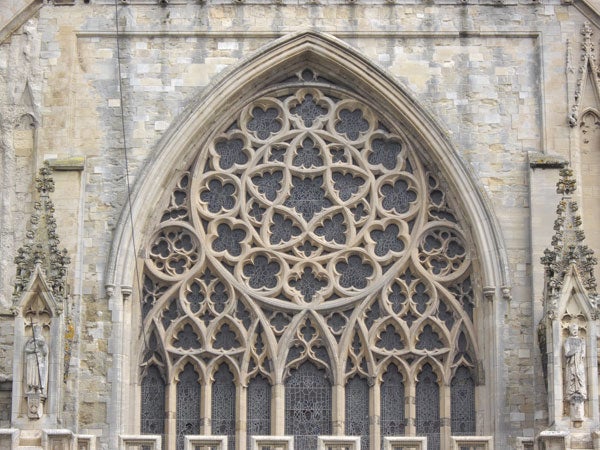
Here’s the usual detail test shot of the West Window of Exeter Cathedral, for you to compare with other cameras. See below for a full res crop, or click to see the whole picture.
—-
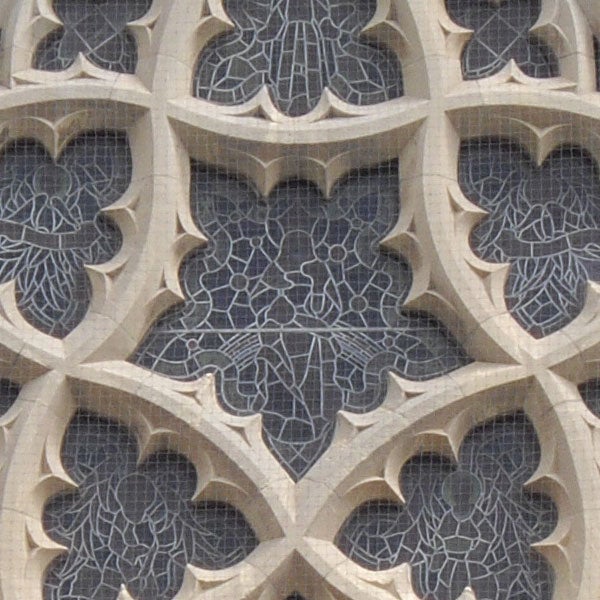
Lots of fine detail from the 12-megapixel sensor.
—-
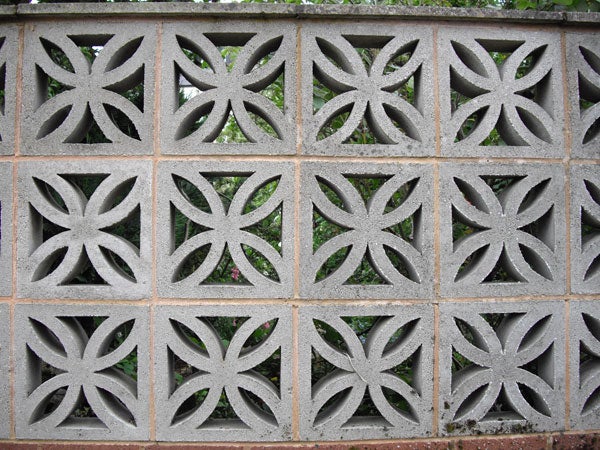
The lens produces some barrel distortion at wide-angle, but no worse than most ultra-compacts.
—-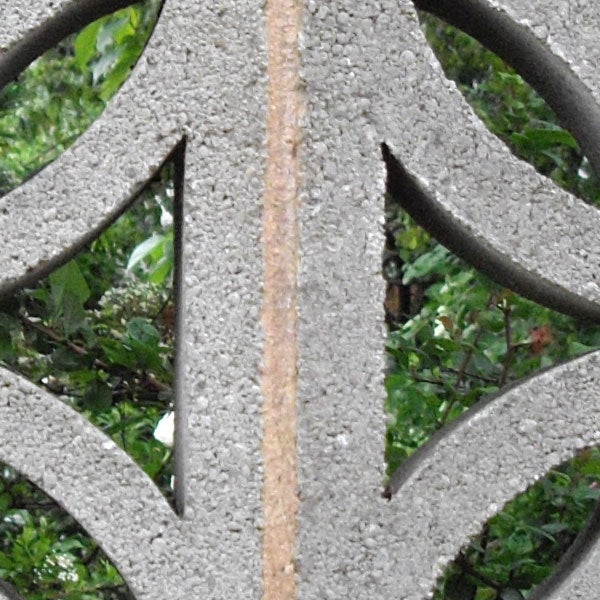
The lens is a little soft compared to some, but not enough to be a problem in most situations.
—-
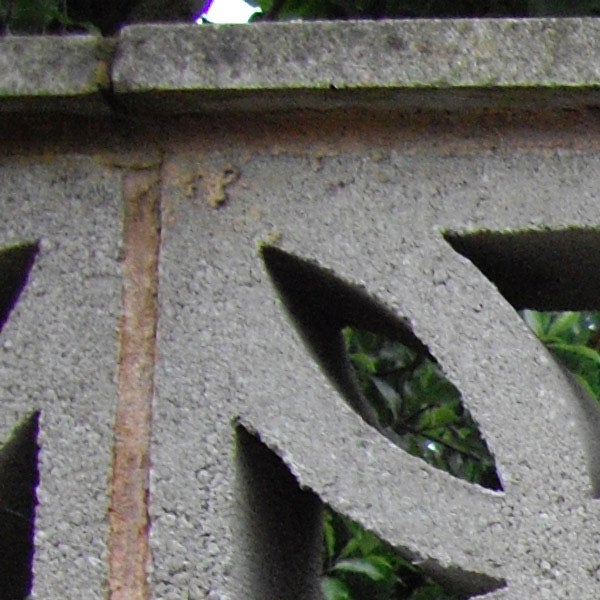
There is a bit more blurring at the edges of the frame, and a bit of chromatic aberration too.
—-
”Here are some general test shots to help evaluate the camera’s overall image quality, including the zoom range of the lens. Some pictures may be clicked to download the full size original image.”
—-
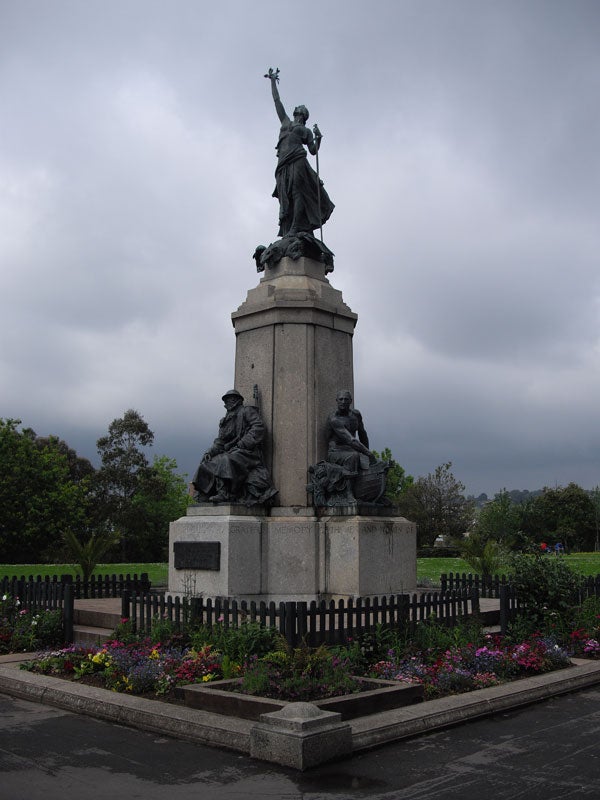
The wide angle is equivalent to 37mm, slightly different to the S10.
—-

The telephoto end is equivalent to 111mm.
—-

Colour rendition is very natural, with good detail in bright saturated areas.
—-
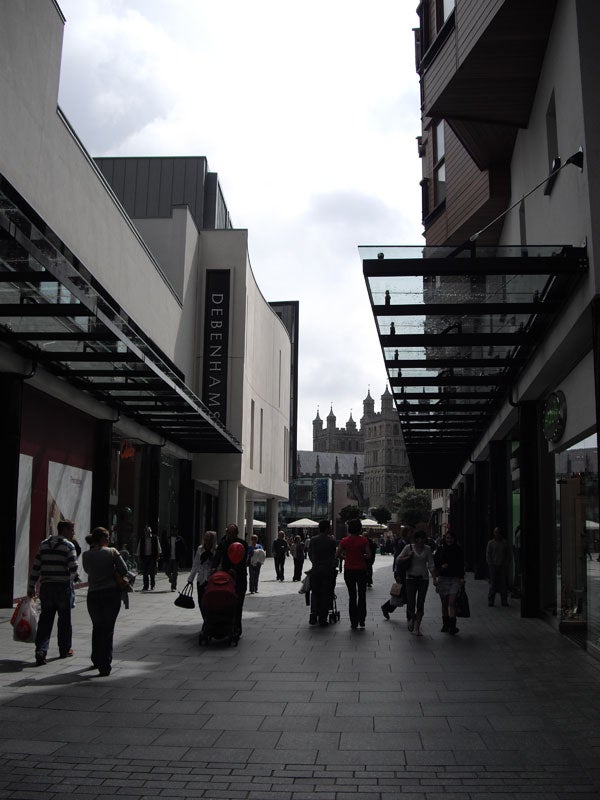
The new Dynamic Range Adjustment feature make a good job of preserving shadow and highlight detail.
—-
Trusted Score
Score in detail
-
Value 9
-
Image Quality 8
-
Build Quality 9
Features
| Camera type | Ultra Compact |
| Megapixels (Megapixel) | 12 Megapixel |
| Optical Zoom (Times) | 3x |
| Image Stabilisation | Electronic |
| LCD Monitor | 2.5 in |
| Flash modes | Auto Flash, Red-eye Reduction, Flash ON, Flash OFF |
| Video (max res/format) | 640 x 480 |
| Memory card slot | Secure Digital (SD) Card, Secure Digital High Capacity (SDHC) Card |

